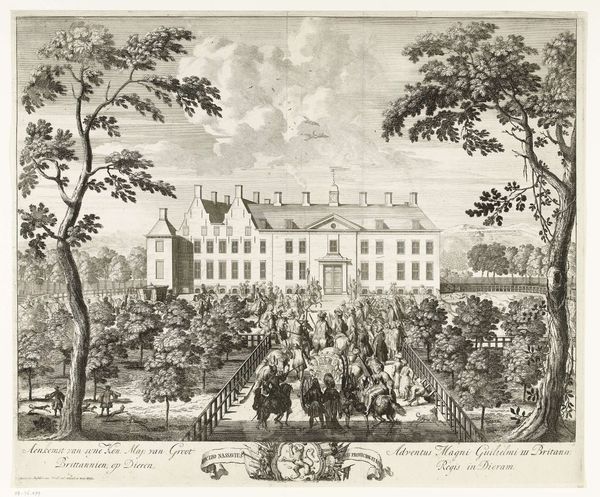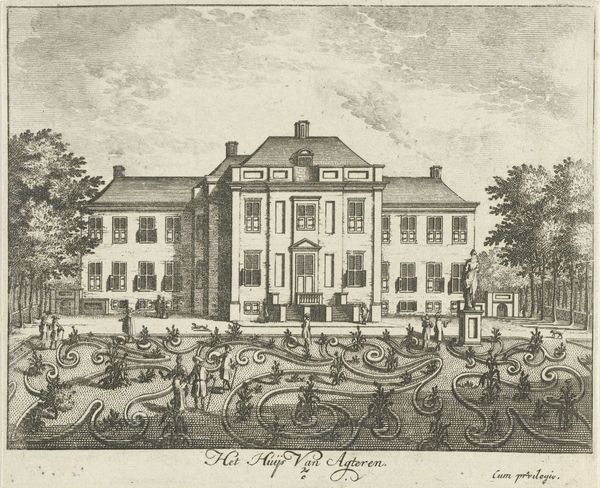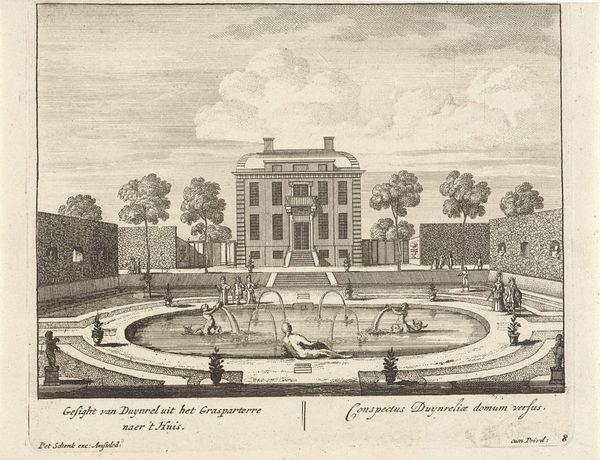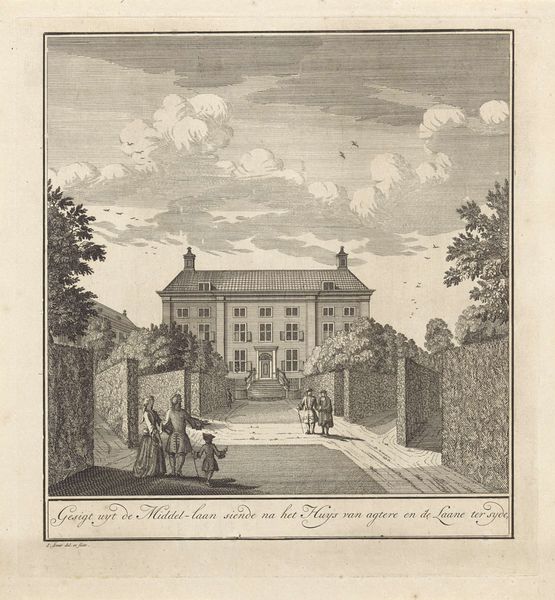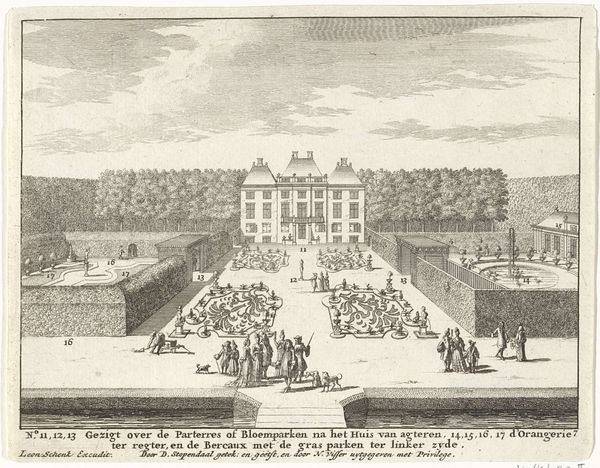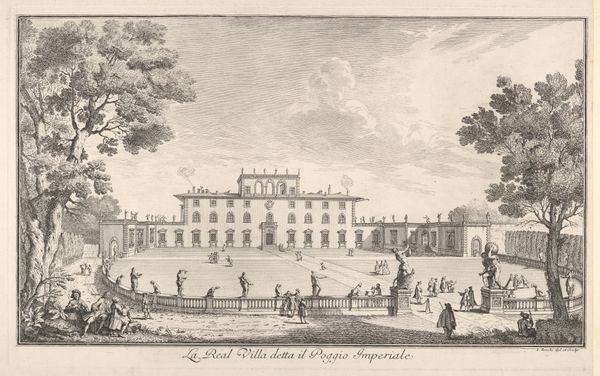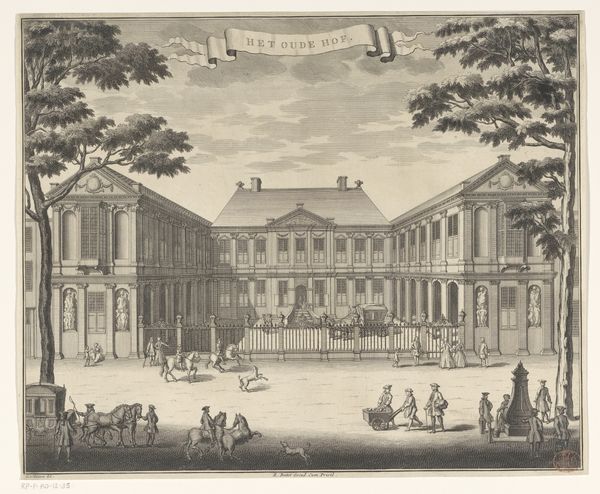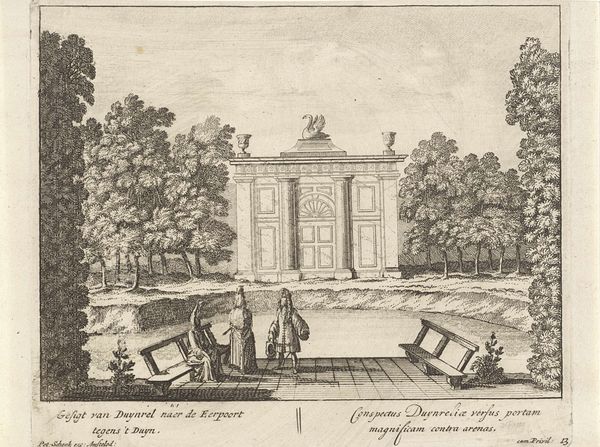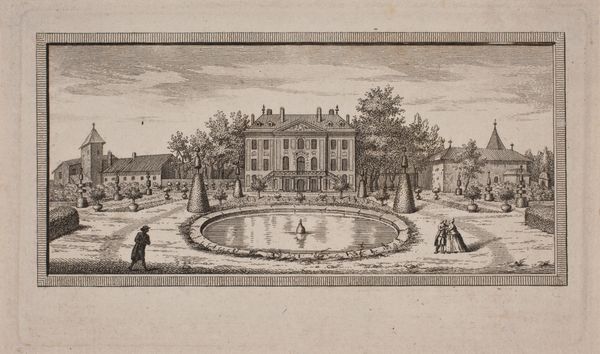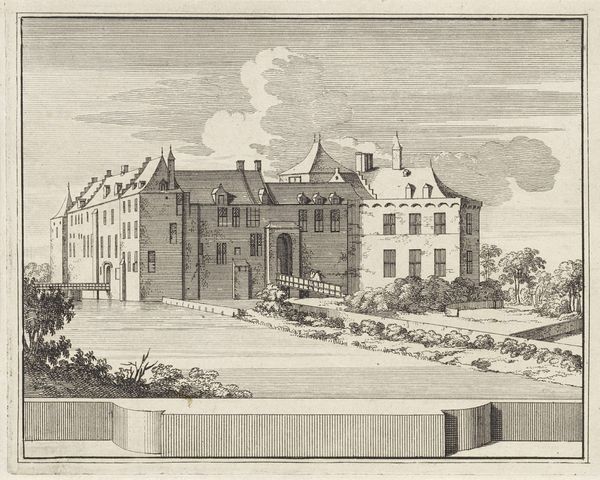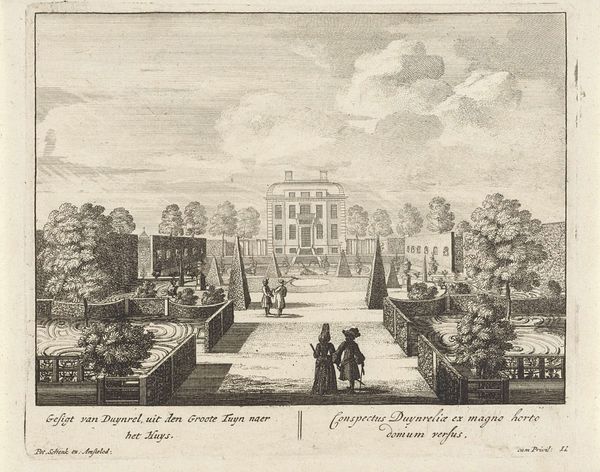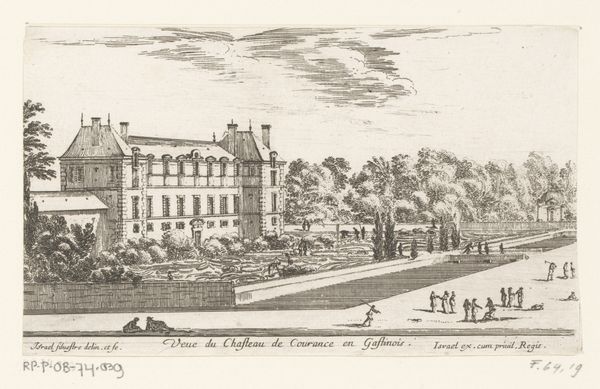
drawing, paper, ink
#
pen and ink
#
architectural sketch
#
landscape illustration sketch
#
drawing
#
baroque
#
mechanical pen drawing
#
pen sketch
#
pencil sketch
#
old engraving style
#
landscape
#
perspective
#
paper
#
ink
#
sketchwork
#
pen-ink sketch
#
pen work
#
cityscape
Dimensions: height mm, width mm
Copyright: Rijks Museum: Open Domain
Curator: Looking at "Buitenplaats Duinrell," a drawing from 1701 by Pieter Schenk housed in the Rijksmuseum, what strikes you first? Editor: The sheer labor. All those tiny pen strokes building up the details! You can practically feel the artist bent over the paper for days on end to achieve that sense of depth and precision. What level of magnification did the original draftsman require? Curator: Indeed! Schenk's rendering offers more than a simple depiction. The engraving medium makes the details visible for all and offers insight into the socio-political climate, reflecting the grandeur the elite desired to project in the Dutch Golden Age. This wasn’t just a home; it was a statement. Editor: A statement meticulously crafted. The deliberate placement of figures, the coaches... all staged for viewing from specific vantages. Notice how the hard lines of the architectural construction are mediated through the foliage to the left. What can we discern about class structures through his material and artistic decisions? Curator: Precisely! Schenk crafted not just an image but a brand, conveying the prominence of the property owner and the power structures underpinning it. Editor: Thinking of those power structures... these elaborate landscapes and buildings speak volumes about land ownership, wealth distribution and even consumption. All the ink and paper used represent raw materials acquired. Who paid for that? It’s easy to gloss over that when focusing on aesthetics, isn't it? Curator: Yes, but that perspective reveals so much! Understanding Schenk's work in its historical context enables us to interpret the symbols of social authority that such works upheld. Editor: I guess it shows that there’s beauty and then there's what is constructed to produce beauty. Both require interrogation and attention. Curator: Absolutely. Thank you. It provides a more comprehensive understanding when materiality and historical interpretation meets. Editor: And the labor that made it possible. It provides a needed sense of reality.
Comments
No comments
Be the first to comment and join the conversation on the ultimate creative platform.
